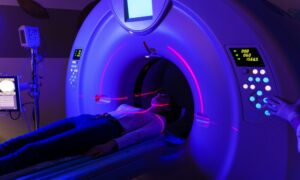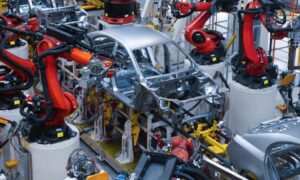As the restaurant industry becomes increasingly competitive, restaurant owners are turning to technology to improve efficiency, safety, and the overall dining experience. One area where technology is having a significant impact is in the design and function of commercial kitchen equipment. From smart ovens to automated fryers, modern commercial kitchens are incorporating cutting-edge technology to improve efficiency, reduce waste, and enhance food safety.
Smart Ovens and Grills
One of the most significant innovations in commercial kitchen equipment is the use of smart ovens and grills. These devices use advanced sensors and algorithms to monitor and control the cooking process, ensuring consistent results every time. Some models even allow chefs to program custom recipes and cooking profiles, making it easier to prepare high-quality dishes consistently. Smart ovens and grills can also help reduce energy consumption by automatically adjusting temperature and cook times based on the amount of food being prepared.
Automated Fryers
Frying is one of the most common cooking methods used in commercial kitchens, but it can also be one of the most dangerous. Automated fryers help reduce the risk of burns and other injuries by using robotic arms to lower and lift food baskets into the oil. This eliminates the need for employees to reach into the hot oil, reducing the risk of accidents. Automated fryers can also help reduce food waste by automatically adjusting cooking times and oil temperature based on the amount of food being prepared.
High-Tech Refrigeration Systems
Keeping food at the right temperature is crucial for food safety and quality. High-tech refrigeration systems use advanced sensors and algorithms to monitor and adjust temperature and humidity levels automatically. Some models can even alert staff when temperatures fall outside of safe ranges, helping prevent foodborne illnesses. Additionally, advanced refrigeration systems can help reduce energy consumption by adjusting cooling cycles based on usage patterns.
Automated Dishwashers
In a busy restaurant, keeping up with the demand for clean dishes and utensils can be a challenge. Automated dishwashers use advanced sensors and algorithms to automatically adjust water temperature and cycle times based on the amount of dishes being washed. This helps reduce water and energy consumption, while also ensuring consistent cleaning performance. Additionally, some models can help reduce the need for chemicals and detergents by using advanced filtration and ionization technologies.
High-Efficiency Ventilation Systems
Cooking can generate a significant amount of heat, smoke, and grease, which can be a hazard to employees and customers. High-efficiency ventilation systems use advanced filters and fans to capture and remove smoke and other pollutants from the air. This helps improve indoor air quality, reduce the risk of fire, and enhance the overall dining experience. Additionally, advanced ventilation systems can help reduce energy consumption by automatically adjusting fan speeds based on cooking activity.
Touchscreen Displays and Ordering Systems
In addition to improving the efficiency of cooking and cleaning processes, technology is also being used to enhance the overall dining experience. Touchscreen displays and ordering systems allow customers to place orders directly from their table, reducing wait times and improving accuracy. Some systems even allow customers to customize their orders, helping ensure that they receive exactly what they want. Touchscreen displays can also help restaurant owners track customer orders and preferences, making it easier to tailor menus and promotions.
Remote Monitoring and Control
One of the biggest advantages of incorporating technology into commercial kitchen equipment is the ability to monitor and control operations remotely. Many devices now come with mobile apps or web-based interfaces that allow restaurant owners and staff to monitor cooking temperatures, adjust settings, and receive alerts from anywhere with an internet connection. This makes it easier to manage multiple locations and ensure that all equipment is operating efficiently and safely.
Conclusion:
The intersection of technology and commercial kitchen equipment has led to numerous innovative solutions that improve efficiency and safety in restaurant kitchens. High-quality equipment for restaurants, such as smart ovens and automated fryers, can help chefs and kitchen staff save time and reduce the risk of accidents. Additionally, IoT devices and cloud-based software can help managers monitor equipment performance and optimize operations. However, it’s important to ensure that these technological advancements are used responsibly and that proper training is provided to all staff members. By embracing the latest technologies while maintaining a focus on safety and quality, restaurant owners and operators can improve their bottom line and provide a better experience for both employees and customers.



































